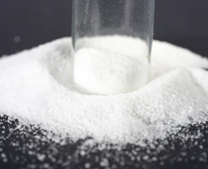- CAS Number: 24969-06-0
- Molecular Formula: C3 H5 Cl O
- CAS Number: 51798-33-5
- Molecular Formula: F-(CF(CF3)CF2O)n-CF(CF3)COOH
- CAS Number: 9003-09-2
- Molecular Formula: (C3H6O)n
Introduction

Polyethers are a class of polymers containing ether linkages in the main chain. They are made by polymerizing molecules of many similar compounds. Based on the type of ether linkages present in the backbone, polyethers can be broadly classified into three categories, namely (i) diaryl ether linkages, (ii) aryl-alkyl ether linkages, and (iii) dialkyl ether linkages. Aliphatic polyethers are mainly synthesized by ring-opening polymerization, while wholly aromatic polyethers are prepared by oxidative coupling or nucleophilic aromatic substitution. Polyethers containing both aromatic and aliphatic units rely mainly on Williamson-type etherification processes.
As compounds with elastic or rubber-like properties, polyethers are commercially important materials. For example, water-soluble liquid or waxy solid polyether diols are used in the manufacture of cosmetic and pharmaceutical formulations as well as emulsifiers or wetting agents and lubricants. Polyethers also lead plant-based oil properties and can be used to produce polyurethanes.
Properties of Polyether

- Excellent impact and wear resistance
- Good heat resistance
- Low temperature flexibility
- Excellent hydrolytic stability
- High rebound properties
Applications of Polyether
From the automotive and paper industries to cosmetic and biomedical applications, polyester materials have very important applications in every area of our lives.
Perfluoropolyether is a high-performance perfluoropolymer containing only three elements: carbon (C), fluorine (F), and oxygen (O). The flexibility of its molecular segments is better than that of general polymers, and it also exhibits high thermal stability, oxidative stability and good chemical inertness. Perfluoropolyether oil can be used as a seal and lubricant for valves, pressure gauges, gear pumps and other components in rocket engine oxidizer systems and fuel sealing systems.
- Paint & Coatings industry
Silane-terminated polyether is a polymer whose main chain is polyether segment, similar to polyurethane, and the end group is siloxy Si—OR. The end group of the silane-terminated polyether is cured to obtain a Si—O—Si segment, which is similar to a silicone structure. The polymer combines the advantages of polyurethane resin and silicone resin, and can be cross-linked to form a film through the action of cross-linking agent and catalyst. It has good weather resistance, heat resistance, cold resistance, environmental protection and construction, and can be used as building waterproof coatings.
Since the last century, amphiphilic block polymers have been used to deliver poorly water-soluble drugs due to their excellent biocompatibility, designability, and biodegradability. Among all polymer surfactants, polyether surfactants with polyethylene glycol (PEG) as the hydrophilic segment have received more attention due to their non-toxicity, non-immunogenicity and anti-protein ability. For example, polyether fluorinated diblock amphiphilic polymers synthesized from polyethylene glycol monomethyl ether and epichlorohydrin substituted with trifluoroethanol can improve the solubility of poorly soluble drugs in water.
If you are interested in our polyether products, please contact us immediately!
References
- Manickam, et al. Recent Developments in Polyether Synthesis. Macromolecular Rapid Communications. 2001.
- BangBang Wang, et al. Research progress of perfluoropolyether and its application. Chemical Propellants & Polymeric Materials. 2022.
- Chen X, et al. Mechanism and Application of Silane-terminated Polyether Building Waterproofing Coating. China Building Waterproofing. 2019.
- BinXiao Wei, et al. Polyether fluorinated amphiphilic diblock polymer: Preparation, characterization and application as drug delivery agent. European Polymer Journal. 2022.




















